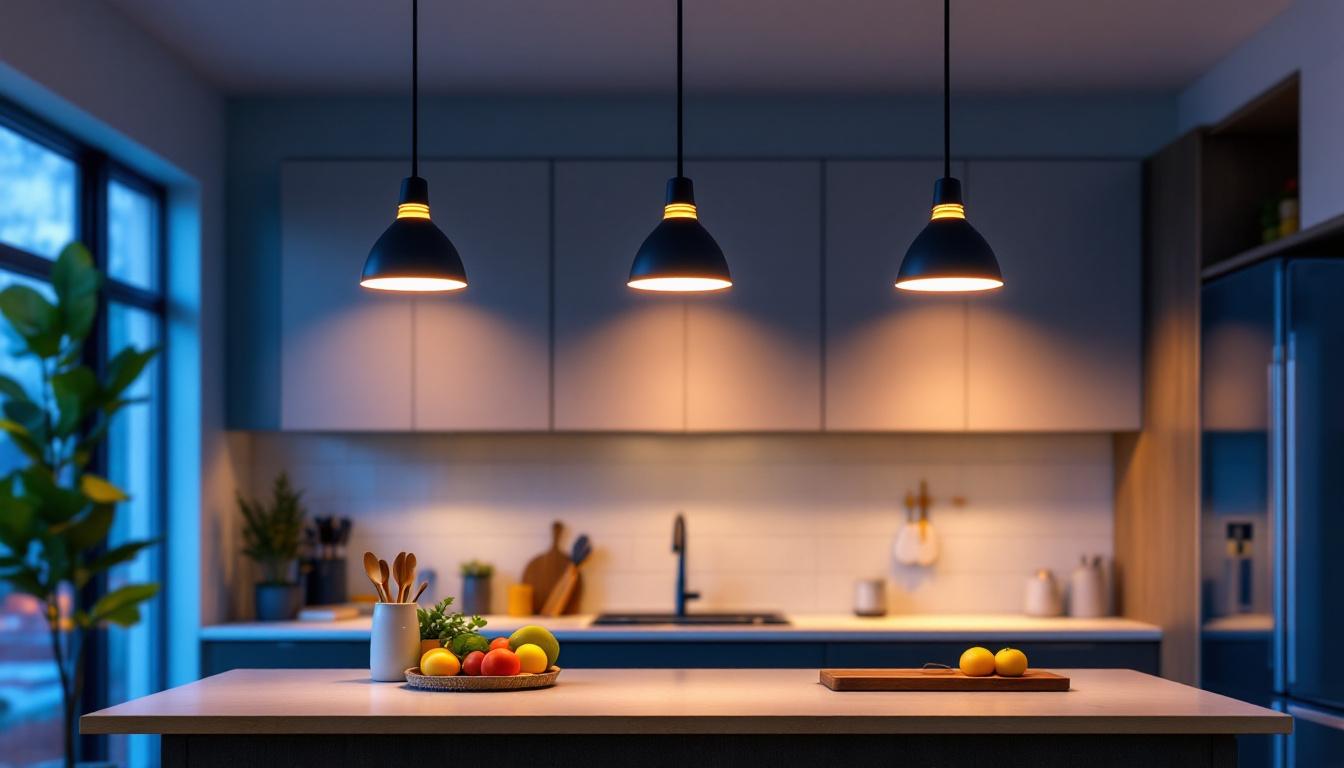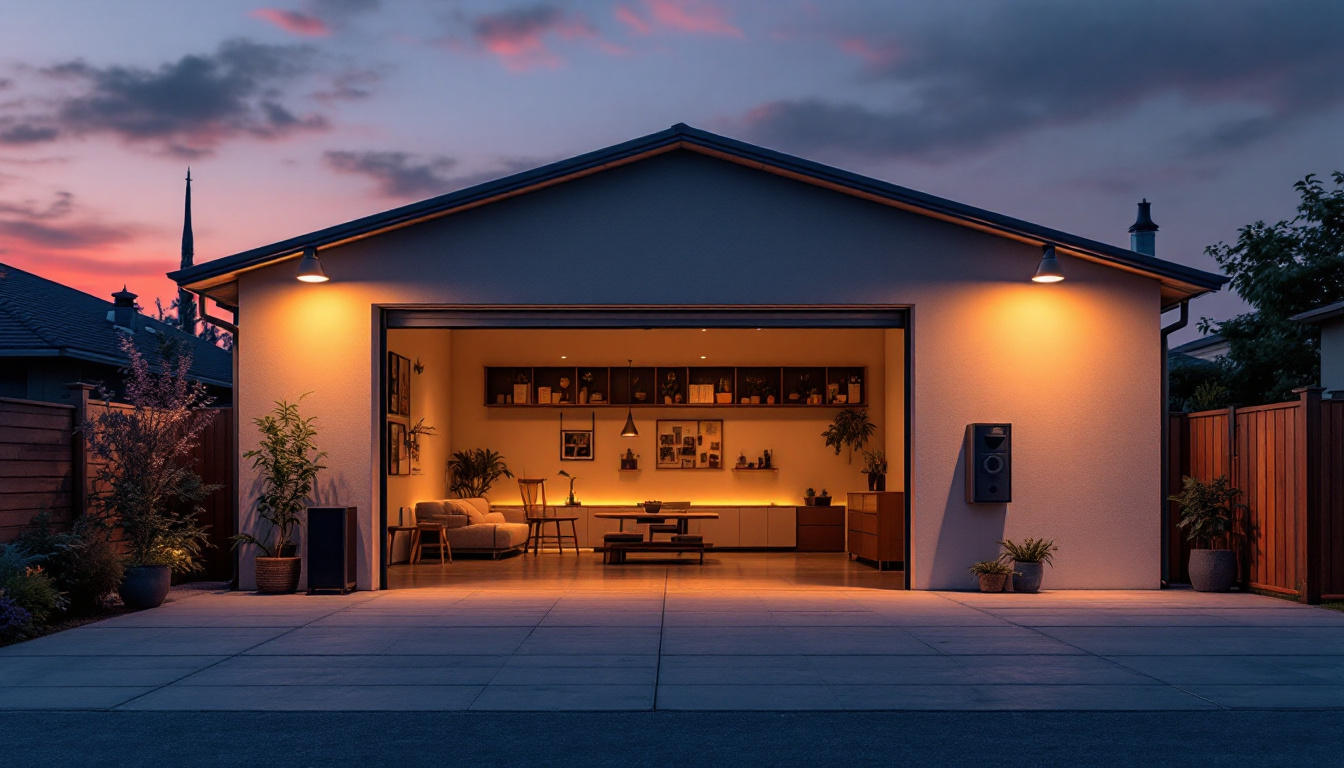
As the heart of the home, the kitchen deserves a lighting scheme that is both functional and aesthetically pleasing. Ceiling can lights, also known as recessed lights, have become a popular choice among homeowners and contractors alike. They provide a sleek, modern look while offering versatile lighting solutions for various kitchen tasks. This article serves as a comprehensive checklist for lighting contractors to ensure that every aspect of kitchen ceiling can lights is covered, from planning to installation.
Can lights are a type of recessed lighting that is installed into the ceiling, creating a clean and unobtrusive appearance. They are designed to provide ambient, task, or accent lighting, depending on their placement and the type of bulb used. Understanding the different types of can lights available is crucial for contractors to meet their clients’ needs effectively. The sleek design of can lights not only enhances the aesthetic appeal of a space but also allows for greater flexibility in lighting design, making them a popular choice among homeowners and interior designers alike.
There are several types of can lights, each suited for different applications. The most common types include:
In addition to these basic types, can lights can also vary by bulb type, including LED, halogen, and incandescent options. LED can lights have gained immense popularity due to their energy efficiency and long lifespan, often lasting up to 25,000 hours or more. This not only reduces the frequency of bulb replacements but also contributes to lower energy bills. Furthermore, many LED can lights now come with dimmable features, allowing homeowners to adjust the brightness according to their mood or the time of day. This versatility makes can lights an excellent choice for various settings, from cozy living rooms to functional kitchens.
Another important consideration when selecting can lights is the trim style. Trims can range from baffle to reflector to adjustable, each offering a different aesthetic and functionality. Baffle trims help reduce glare and are often used in areas where soft, diffused light is desired, while reflector trims provide a more focused beam of light, making them suitable for highlighting artwork or architectural features. Adjustable trims allow for directional lighting, which can be particularly useful in spaces where the lighting needs may change over time. By carefully selecting the right combination of can lights, trims, and bulbs, homeowners can create a beautifully lit environment that enhances both the functionality and ambiance of their spaces.
Before installation, it is essential to assess the kitchen space thoroughly. Consider the layout, dimensions, and existing features such as cabinets and appliances. This assessment will help determine the optimal placement of can lights to ensure even and adequate lighting throughout the area. Take note of any architectural elements like beams or ductwork that may impact the positioning of your fixtures. Additionally, think about how natural light enters the space during different times of the day, as this can influence your artificial lighting needs. A well-lit kitchen not only enhances functionality but also creates an inviting atmosphere for family gatherings and entertaining guests.
The number of can lights required will depend on the kitchen’s size and the desired lighting effect. A general rule of thumb is to use one can light for every 4 to 6 square feet of ceiling space. However, this can vary based on the light’s wattage and the kitchen’s overall design. It’s advisable to create a lighting plan that accounts for different zones, such as cooking areas, dining spaces, and workstations. Consider incorporating dimmable fixtures to allow for flexibility in lighting intensity, which can be particularly useful during meal prep or when hosting dinner parties. Moreover, think about the color temperature of the bulbs you choose; warmer tones can create a cozy ambiance, while cooler tones are better suited for task-oriented areas, ensuring that your kitchen remains both functional and aesthetically pleasing.
The choice of bulbs plays a significant role in the overall lighting quality. Common options include:
Color temperature, measured in Kelvin (K), affects the ambiance of the kitchen. Warm white (2700K-3000K) creates a cozy atmosphere, while cool white (3500K-4100K) offers a more modern and energetic feel. For task lighting, a cooler temperature is often preferred, while warmer tones are suitable for dining areas.
Having the right tools and materials on hand can streamline the installation process. Essential items include:
1. Turn Off Power: Always ensure the power is turned off at the circuit breaker before starting any electrical work.
2. Mark the Placement: Use a pencil to mark the desired locations for each can light based on the lighting plan.
3. Cut Holes: Use a drywall saw to cut holes in the ceiling at the marked locations, ensuring they are the correct size for the can light housings.
4. Install the Housing: Insert the can light housing into the holes and secure it according to the manufacturer’s instructions.
5. Wiring: Connect the wiring from the light fixture to the existing electrical circuit, following local codes and regulations.
6. Insert Bulbs: Once the wiring is complete, insert the appropriate bulbs into the can lights.
7. Test the Lights: Turn the power back on and test the lights to ensure everything is functioning correctly.
After installation, it may be necessary to adjust the angle of adjustable can lights to ensure optimal lighting. This is particularly important for task lighting areas, such as countertops or kitchen islands, where focused light is essential.
Regular maintenance can extend the life of can lights and ensure consistent performance. Consider the following tips:
Incorporating dimmer switches can greatly enhance the functionality of kitchen can lights. They allow homeowners to adjust the brightness according to the time of day or activity, creating a versatile environment. This feature is particularly useful for transitioning from bright task lighting during meal prep to softer lighting during family dinners.
Smart lighting technology has revolutionized how homeowners interact with their lighting. By integrating can lights with smart home systems, contractors can offer clients enhanced control over their kitchen lighting. Features such as remote operation, scheduling, and color changing add an extra layer of convenience and customization.
One of the most common mistakes contractors make is overcrowding the kitchen with too many can lights. While it may seem beneficial to have more light sources, this can lead to harsh lighting and increased energy costs. A well-thought-out layout that balances ambient and task lighting is essential.
Ceiling height plays a crucial role in determining the type and placement of can lights. In kitchens with lower ceilings, it’s advisable to use shallower fixtures to avoid overwhelming the space. Conversely, higher ceilings may benefit from deeper can lights that can project light more effectively.
Kitchen ceiling can lights are an excellent choice for enhancing both functionality and aesthetics in any kitchen. By following this comprehensive checklist, lighting contractors can ensure a successful installation that meets their clients’ expectations. From understanding the basics of can lighting to planning the layout and choosing the right bulbs, each step is crucial in creating a well-lit and inviting kitchen space.
As technology continues to evolve, staying informed about the latest trends and innovations in lighting will enable contractors to provide the best solutions for their clients. By combining practical knowledge with creativity, contractors can transform kitchens into beautifully lit spaces that cater to the needs of modern homeowners.
Ready to elevate your kitchen lighting installations with the finest can lights on the market? Look no further than LumenWholesale, where we provide contractors with exceptional, spec-grade lighting products at unbeatable wholesale prices. Our commitment to quality and affordability means you can deliver outstanding results to your clients without the burden of inflated costs. With our expansive selection that meets rigorous industry standards and the convenience of free shipping on bulk orders, you’re guaranteed to find the perfect lighting solutions for any project. Don’t compromise on quality or value—visit LumenWholesale today for Wholesale Lighting at the Best Value and transform your kitchen lighting designs into stunning realities.

Discover effective strategies for lighting contractors to tackle common challenges with 4ft LED shop lights.

Discover how affordable bathroom light fixtures can significantly enhance energy efficiency in your home.

Discover innovative strategies to future-proof your lighting projects with strip light fixtures.

Discover the frequent pitfalls lighting contractors encounter when installing garage lights outside.